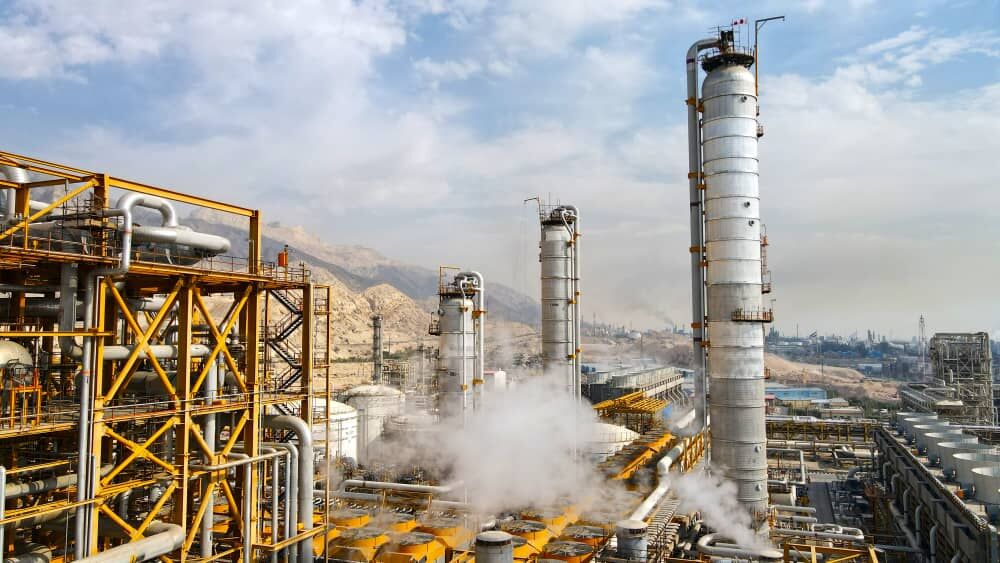According to Mashal Weekly, the petrochemical industry has prioritized environmental sustainability and clean energy throughout its decades of operation. Key initiatives include flare gas elimination and carbon management strategies. Reducing flaring not only cuts waste and preserves national resources but also promotes cleaner operations, with carbon management being a major outcome of this approach.
While carbon management efforts in the oil industry started around 10 years ago, some petrochemical companies have taken more significant steps. These firms have pledged to comply with global carbon reduction requirements to maintain their competitive edge. Beyond reducing internal flaring, they emphasize environmental standards in exports, including carbon-free maritime shipping—a factor that will significantly impact future export costs.
Under current policies, fossil fuel costs for ships are expected to double by 2030, while carbon prices are projected to exceed $100 per ton by 2035 and $400 by 2050. Additionally, the European Union has expanded its Emissions Trading System (ETS) to cover maritime shipping emissions starting in 2025 and tightened greenhouse gas intensity rules for maritime fuels under the FuelEU Maritime regulation.
Corrective measures in carbon management
Alongside individual corporate efforts, entities like the Petrochemical Research and Technology Company (PRTC) and the Research Institute of Petroleum Industry (RIPI) have made notable progress.
Nasser Noah-Jah, CEO of PRTC, highlighted strict carbon taxation policies, noting that the petrochemical industry accounts for a significant share of global CO₂ emissions—around 130 million tons domestically and over 2 billion tons worldwide in 2023.
He stressed the importance of low-carbon products in enhancing competitiveness, stating that industry leaders in this field will gain a premium brand reputation and market appeal.
PRTC began extensive carbon reduction research in 2011, though sanctions later created challenges, such as securing CO₂ absorbents for ammonia plants. In response, PRTC developed domestic alternatives, now used in companies like Razi, Kermanshah, and Pardis.
Another key initiative has been optimizing CO₂ capture and recovery to reduce energy use. PRTC improved the absorption tower efficiency at Morvarid Petrochemical in 2016, leading to lower CO₂ emissions. By 2023, a new absorbent outperformed foreign equivalents.
Additionally, Kermanshah Petrochemical launched Iran’s first CO₂ recovery unit in 2021, replacing traditional solvents with more efficient, less corrosive alternatives. PRTC aims to scale up these technologies by 2025.
RIPI has also contributed by researching CO₂ conversion into methanol—a method China has advanced. While "green methanol" production remains costly, hydrogen-based processes show promise in cutting carbon output.
Global carbon management requirements
The UN Climate Change Conference (COP) consistently addresses carbon reduction strategies. At COP28, cleaner maritime fuels were emphasized, a trend expected to continue at COP29.
Erfan Afzali, advisor to Iran’s Chamber of Commerce Energy Commission, warned that industries—especially petrochemicals—must comply with the EU’s Carbon Border Adjustment Mechanism (CBAM). CBAM, voluntary since 2023, will be mandatory from 2026 for steel, aluminum, cement, hydrogen, and fertilizers. Exporters must report emissions or face carbon taxes.
Afzali noted Iran’s high energy intensity and CO₂ emissions, compounded by a lack of integrated planning and limited access to international funding. Meanwhile, global carbon markets ($942 billion in 2022) now rival petrochemical markets ($619 billion), signaling rapid growth Iran must engage with.
Saudi Arabia launched a voluntary carbon market in 2023, targeting 44 million tons of CO₂ capture via CCS by 2035. China, home to the largest ETS, also started a voluntary carbon market in 2024.
Iran’s carbon footprint
Iran’s National Petrochemical Company reported 42 million tons of CO₂ emissions in 2023—24% of the oil industry’s total. With rising production, this could exceed 100 million tons by 2035.
Corrective actions include renewable energy adoption, steam production upgrades, and emission monitoring (MRV) systems. The company also established a domestic decarbonization fund, supported by petrochemical firms and GCF resources, to finance voluntary emission cuts.


Your Comment